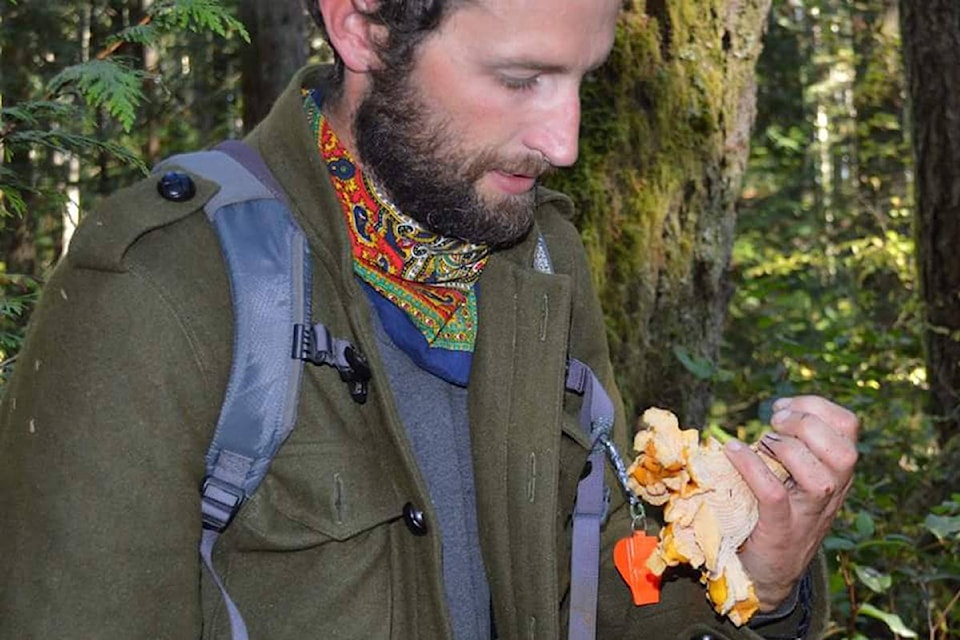All mushrooms are edible, but some of them only once.
That bit of rather dark humour, commonly known among true mycologicists, serves as a warning to people who are inclined to venture out in search of edible wild mushrooms.
“People enjoy learning about mushrooms and about nature in general. But mushrooms are an involved world that can take a lifetime to learn,” said Bill Jones, a chef and author of 12 cookbooks that feature wild ingredients.
Jones is based on Deerholme Farm where he regularly conducts foraging workshops for people who have become interested in the foraging lifestyle.
“People love nature and foraging is like going out on a treasure hunt where at the end of the day you get to eat the treasure you’ve found.”
Jason Gowen of the South Island Mycological Society agreed with that assessment.
“The flavour profile you can get from wild mushrooms is truly amazing, but it takes a solid base of knowledge to go out and pick mushrooms safely,” said Gowen.
“There are lots of mushrooms that are edible. Chanterelles, Morles, and Oyster mushrooms are just a few examples. But there are a handful that are dangerous and have the potential to be fatal.”
Gowen added that there are also some mushrooms that, while not fatal, will make you wish you would die if you make the mistake of ingesting them.
And while mushrooms have certainly garnered much of the attention of late with news of the Death Cap mushroom’s appearance on the Peninsula and elsewhere in the Greater Victoria region, there are other threats to those who have become interested in the foraging lifestyle.
“Wild berries, dandelion, watercress, wild sorrel and stinging nettle are all plentiful in B.C.’s coastal forests and along local waterways. If you can’t find wild blackberry in southwestern B.C. you just aren’t trying,” said Gowen.
“There’s also things like wild arugula, stinging nettles, mountain sweet cicely, ox-eye daisy, fiddle head ferns , sea asparagus, and a whole host of other berries that are all edible and can be delicious.
But when foraging for these plants, Jones warns that there are also dangerous plants.
“It’s true that pretty much anywhere you step in the woods (on the Peninsula) there are edible plants. But there are more dangerous and potentially deadly plants that are not mushrooms as well and people need to be aware of that. There are actually far more dangerous plants than there are dangerous mushrooms.”
He pointed toward plants like water hemlock; a plant has sometimes been confused with other members of the parsley family and has led to near-death experiences for hapless foragers. Giant hogweed can be similarly dangerous as can the attractive Daphne laureola, a plant whose every part is poisonous.
It should be noted that, while many berries, including the invasive Himalayan blackberry, can be very tasty, there are some berries that are anything but.
Some may also be deadly.
Stay away from white, yellow, and green berries. In most cases (some botanists guess as high as 90 per cent), these three colors indicate poisonous berries. One should also avoid berries on plants with spines, bitter smells, or milky sap.
And then there is seafood.
Living by the ocean with an abundance of shellfish readily available for the foraging gourmand may be tempting, but has the potential to make those foragers very ill, even causing death in some cases.
Dick Nagtegaal, an administrator with Fisheries and Oceans Canada explained that the departments website (pac.dfo-mpo.gc.ca/fm-gp/contamination/index-eng.html) is regularly updated with closure areas from which shellfish should not be harvested or consumed.
“People can get horribly sick and hospitalized from eating contaminated shellfish,” he said, explaining that these creatures are filtration feeders and will accumulate toxins from pollution and agricultural run-off as well as naturally occurring toxins present in certain algae blooms.
“The days are gone when you could just scoop them up and eat them. Maybe you could never really do that. There have always been toxins in the water that have bio-accumulated in shellfish and, in the past, there was a degree of trial and error and a degree of local knowledge.”
These days however, checking with the website is your best option.
For those intent on foraging their own food, seek out some instruction on how to do it safely.
“A hundred years ago there was a base of knowledge that got passed along, but these days it’s something we have to re-learn. There are lots of classes out there and it’s a good idea to learn before you venture out and pick,” said Jones.
